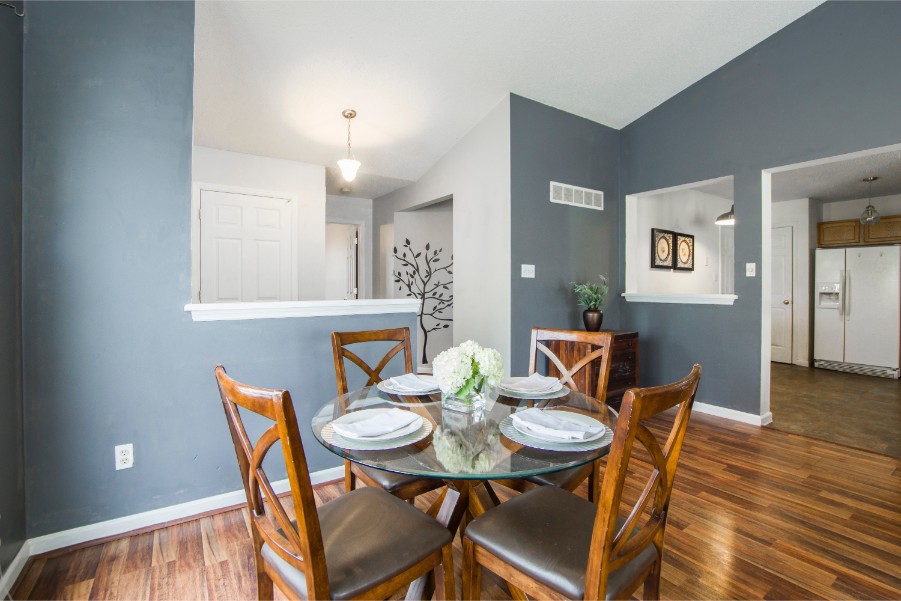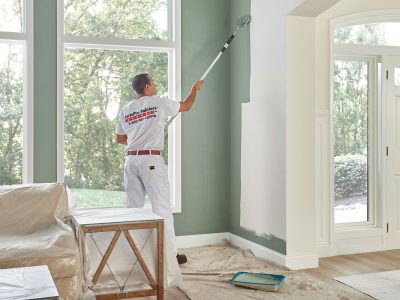Reliable Lakewood Interior Painting Services for Long-Lasting Results
Reliable Lakewood Interior Painting Services for Long-Lasting Results
Blog Article
Enhance Your Interior Style With Comprehensive Shade Appointment
The integration of color appointment right into interior decoration presents an unique opportunity to fine-tune and boost the psychological and visual vibration of a room. By engaging with an experienced color professional, you can navigate the intricacies of color selection, making certain that your options not only complement architectural attributes but also resonate with individual style and emotional effect. This tactical collaboration can considerably influence the total ambience of your setting, cultivating a sense of harmony and function. Recognizing the subtleties of this process is essential-- what vital facets should be considered to accomplish ideal outcomes?
Advantages of Shade Appointment

Additionally, shade examination help in making the most of all-natural light and enhancing spatial assumption. Lighter tones can make a space appear even more expansive, while darker tones produce an intimate setting. Cleveland Metro Painting Specialists. This critical application of shade can considerably influence the overall setting of any interior area
In addition, professional specialists have a thorough understanding of ageless classics and existing patterns, ensuring that the picked shades will certainly stay enticing over time. This insight can save customers from pricey redesigns in the future. Shade appointment encourages customers by providing them with a clear vision and instructions, fostering confidence in their design choices and eventually leading to an extra successful and rewarding interior layout outcome.
Recognizing Shade Psychology
The value of color psychology in interior layout can not be overemphasized, as it digs right into the emotional and psychological effects that different hues can stimulate in individuals. Shades can influence mood, actions, and also performance, making them a vital consideration in any style job.
For example, cozy shades such as red, orange, and yellow are usually related to energy and warmth. They can promote sensations of enjoyment and comfort, making them ideal for social spaces like living kitchens or spaces. Alternatively, great colors like blue, environment-friendly, and purple often tend to evoke calmness and peace, making them excellent for rooms or reflection areas.
In addition, using neutral tones can create a balanced atmosphere by permitting the bolder shades to stand out without overwhelming the senses. Understanding these emotional impacts allows designers to develop rooms that not only look visually pleasing however likewise promote psychological well-being.
Incorporating color psychology right into interior decoration entails a thoughtful option of hues customized to the intended function of each space, inevitably enhancing the general experience for its passengers. This recognition is important for attaining a useful and harmonious interior setting.
The Color Wheel Described
Understanding the partnerships between hues is essential for efficient indoor layout, and the shade wheel functions as a useful device in this process. The color wheel, established by Isaac Newton in the 17th century, shows the range of shades arranged in a circular layout. It comprises primaries-- red, blue, and yellow-- that can not be developed by mixing various other shades. Second shades, created by combining primaries, include eco-friendly, orange, and purple. Tertiary shades arise from blending a main and an additional shade, resulting in tones such as blue-green and red-orange.
The color wheel aids developers realize the connections between shades, including complementary, analogous, and triadic schemes. Complementary shades, located contrary each various other on the wheel, produce lively contrasts that can stimulate a room. Analogous shades, located alongside each other, offer a harmonious and natural appearance. Triadic systems use 3 evenly spaced shades, using equilibrium and visual rate of interest.
Making use of the shade wheel in interior decoration not just improves visual appeal but also evokes particular emotions and environments, making it a critical referral for color assessment. Understanding these relationships inevitably equips developers to develop areas that are both aesthetically fascinating and functional.
Selecting the Right Scheme
A well-chosen color system can merge a space, enhance its features, and stimulate desired emotions. Different rooms serve diverse functions and require schemes that show their desired usage; for instance, relaxing shades such as soft blues or greens function well in bedrooms, promoting leisure.
Light can considerably modify just how shades appear, so it is essential to examine the space at various times of the day. An unified combination needs to match these attributes, developing a cohesive appearance throughout the space.
When selecting colors, make use of the 60-30-10 rule, which suggests that 60% of the space need to be a leading shade, 30% a secondary shade, and 10% an accent color. This proportion makes sure balance and visual interest (Cleveland Metro Painting Specialists). Example colors on the walls before devoting, as this permits you to see exactly how the tones communicate with one another and the overall setting they develop in your interior style job.
Functioning With a Color Expert

When working with a color consultant, the process usually begins with a preliminary assessment. During this conference, you'll review your vision, preferences, and the existing components in your space. The expert will assess your demands and might suggest specific shade combinations that line up with your objectives.
After developing a direction, the specialist will offer samples and visual aids to aid you imagine the https://www.housepainterslakewoodoh.com proposed color design. This action is important, as colors can appear in a different way under varying lighting problems.
In addition, a color expert can direct you in picking corresponding furnishings, artwork, and accessories to harmonize with your picked combination. By teaming up very closely, you can accomplish a polished visual that boosts your insides and develops an inviting atmosphere. Ultimately, the competence of a color specialist can significantly enhance the total effect of your layout job.
Final Thought
In summary, comprehensive shade examination offers as an essential tool for enhancing interior design. By leveraging professional expertise of shade psychology and spatial characteristics, a customized color scheme can be developed to stimulate particular feelings and develop an unified setting.
By engaging with an experienced shade expert, you can navigate the intricacies of shade choice, making sure that your options not only enhance architectural attributes however additionally reverberate with personal design and mental influence. It consists of key shades-- red, blue, and yellow-- that can not be developed by mixing other shades.The color wheel assists designers realize the relationships between colors, including complementary, comparable, and triadic schemes.When picking shades, use the 60-30-10 guideline, which suggests that 60% of the space need to be a leading color, 30% a secondary color, and 10% an accent shade. By leveraging expert understanding of shade psychology and spatial dynamics, a tailored shade combination can be developed to evoke specific emotions and develop a harmonious atmosphere.
Report this page